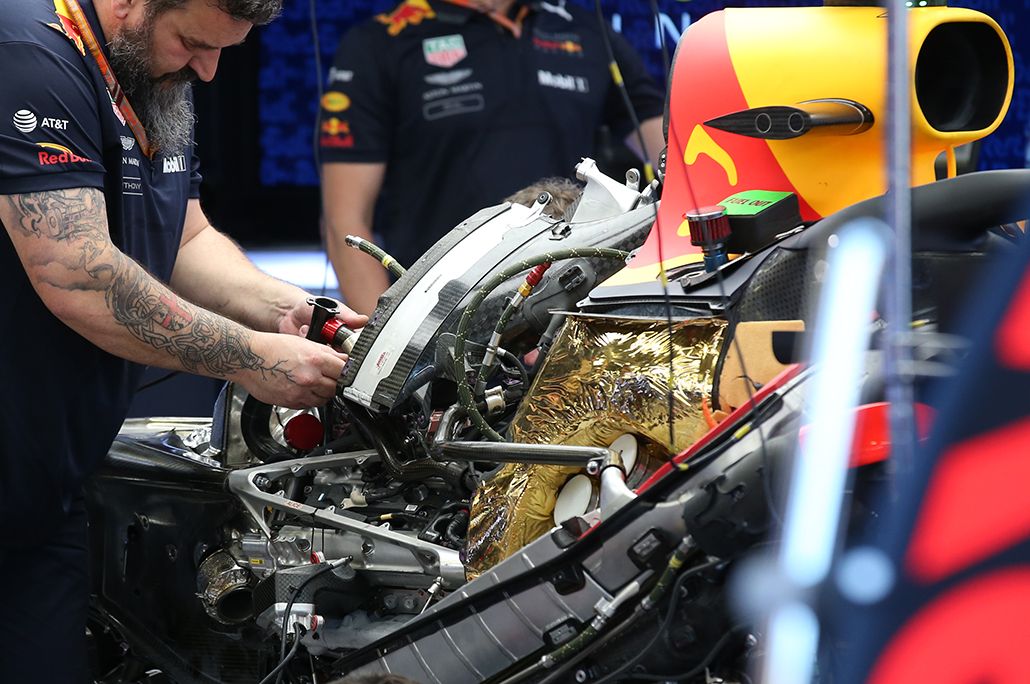RED BULL SPROUTS WINGS
To go fast in Monaco, a car must generate downforce at low speed, float across the bumps but also take exceptionally tight corners.
Like the other teams, Red Bull mounted a rear wing generating a lot of downforce (speeds being slow, the drag generated is less penalizing than elsewhere). It also added a mini T-wing, which by the way were used on all cars in the Principality, with the exception of the Renault (which only tested it in Australia).
In principle, the T-wing is prohibited this season by article 3.5.1 of the technical regulations, but the imprecise formulation nevertheless leaves the door open to a small winglet. The article defines a triangular area above the engine cover in which no bodywork element can be added. But it does not mention the space below this area, which is exploited by the teams to install a slim wing. In theory, this wing is used to better direct the airflow towards the lower plane of the rear wing and, consequently, to optimize the operation of the diffuser.

© F1i
This part itself creates additional downforce, which is essential to do well in the Monegasque streets, while at the same time it optimizes the airflow towards the underside of the main plane of the rear wing and, consequently, the operation of the diffuser (which is why it equips the Ferrari, Mercedes, Force India, Haas and Toro Rosso on every Grand Prix).
The RB14 is also equipped with a winglet installed above the exhaust, again to generate additional downforce. The “monkey seat” located in the extension of the muffler, which was part of the traditional Monaco kit, has been banned for this season.

 '
'



